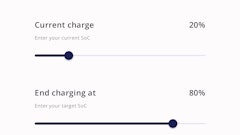The Scoop
Appealing to their customers’ desire for friendly service and fresh food, one of the country’s largest grocery chains launched an initiative two years ago that emphasized these attributes. Adding more fresh produce and prepared foods to the overall choices in the stores was the first step. To accentuate the fresh aspect, deliveries are made through the front door of the market directly to the deli or produce section, bypassing the back room altogether and underscoring the freshness of the goods.
The Challenges
The grocery chain contracts with a commissary that uses proprietary recipes created by the grocery chain to make the prepared foods, thereby assuring consistent quality and taste. Elsewhere., a daily shuttle service transports the prepared foods to Penske’s facility, arriving before dawn every morning. Penske’s trailers are then loaded with everything required for that day’s routes.
“We rely on the daily shuttle to maintain its schedule,” says Andy Moses, senior vice president – global products, Penske Logistics. “Once it arrives, we load our trucks in a timely manner so that we can get back on the road and avoid traffic, and also avoid holding up the driver and cutting into hours-of-service restrictions. We always stay in close communication with the shuttle drivers.”
The shuttle vehicles are equipped with “real-time reporting refrigerated access,” Moses says, “which allows us to turn on the reefer from a remote computer, precool the vehicle, reset temperatures in transit, and monitor the temperature throughout the trip.”
A post-trip reporting unit allows Penske to download temperature information for recordkeeping and diagnostics purposes.
Compliance with the FDA’s Food Safety Modernization Act (FSMA) is also key. According to Moses, there are some logistics providers who lag in this area. “But for those 3PLs who have a good under-standing of the rules and regulations, there are many opportunities in the fresh food sector.”
The Training
Penske’s drivers make deliveries between 7:00 a.m. and 5:00 p.m., which means there is a lot of interaction with customers because the deliveries are coming in through the front door of each store, while drivers must also negotiate parking lots and automobile traffic.
However, “One of the toughest parts of the job is training for cold chain compliance. Penske spends a lot of time teaching the drivers how to properly handle and trans- port the food products, including how to keep the product between 35 and 39 degrees F,” says Moses.
Drivers follow a protocol for cold chain compliance that includes taking a temperature reading from the truck and writing it on the delivery document and retaking the temperature of the product once it’s delivered inside the store to its respective department. If the temperature reading inside the store is questionable, the driver uses a probe thermometer to confirm the temperature inside the package or the product itself.
“If that does not show us what we need, then we’ll sacrifice any of the items necessary to make sure the temperature is right,” says Moses.
Penske’s regional operations include extra safeguards for protecting the cold chain integrity of frozen products. The company’s cross-dock is maintained at 38 degrees F, so frozen foods do not encounter a temperature change during the loading process onto the trucks. But not every logistics provider follows this process, Moses says.
The Opportunity
According to Moses, “Penske is versatile in that we can enter into many different industries once we understand the key components and service offerings the customer is looking for because the culture of our organization is such that if we feel comfortable with something, we will commit to investing the time, effort and expertise to provide that customer with an industry leading solution—and do it exceedingly well.” ◆
Penske’s Recipe For Success
• Providing a quality delivery process that includes accurate temperature control and compliance with Food Safety Modernization Act (FSMA) regulations
• Creating a seamless process where the primary relationship is between the driver and the store contact
• Offering specialized training and administrative details
• Implementing a “Business in a Box” process that is transferable to different locations


























